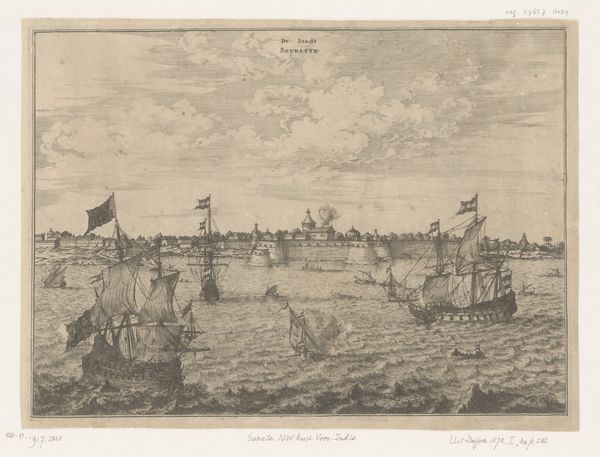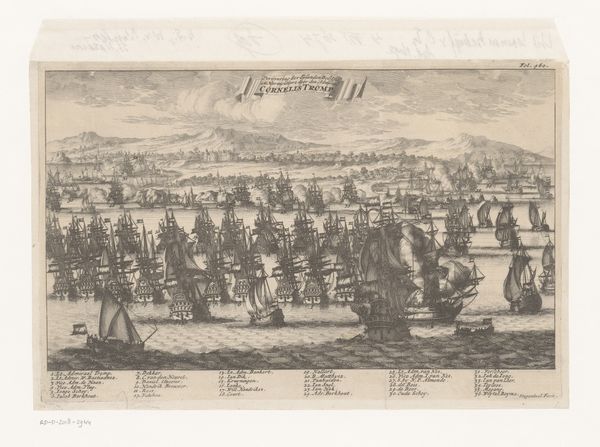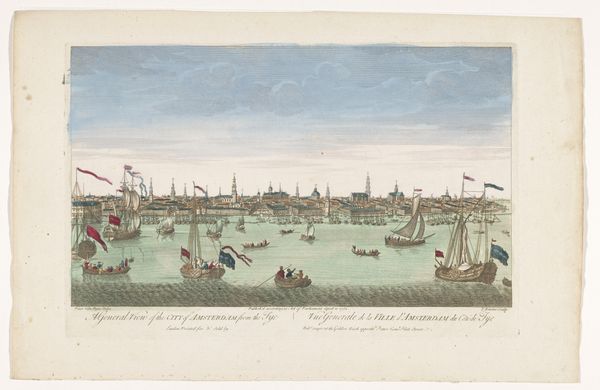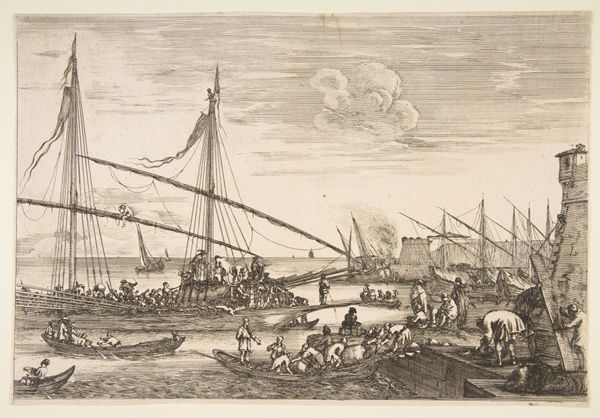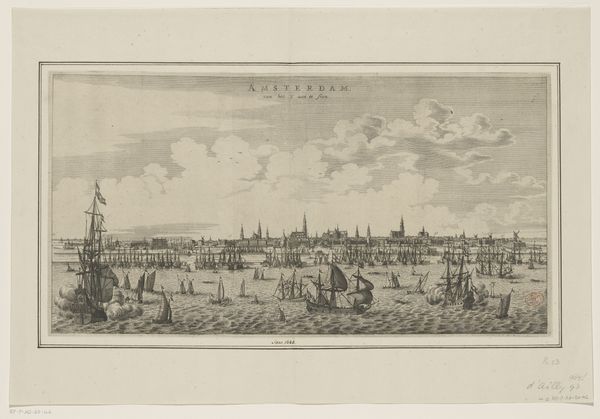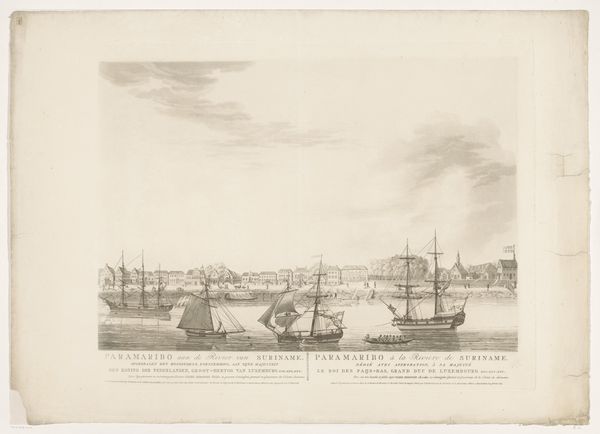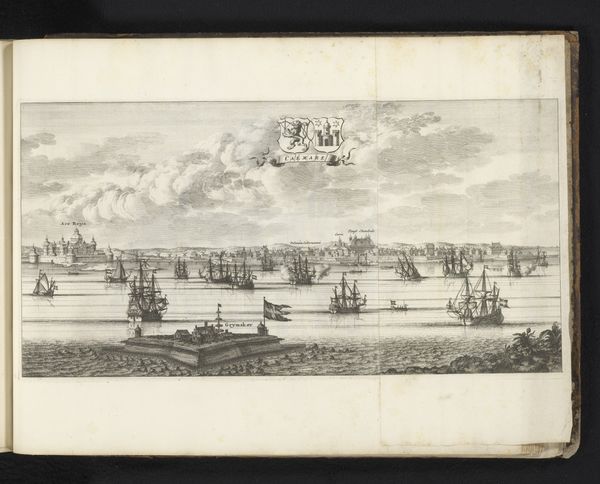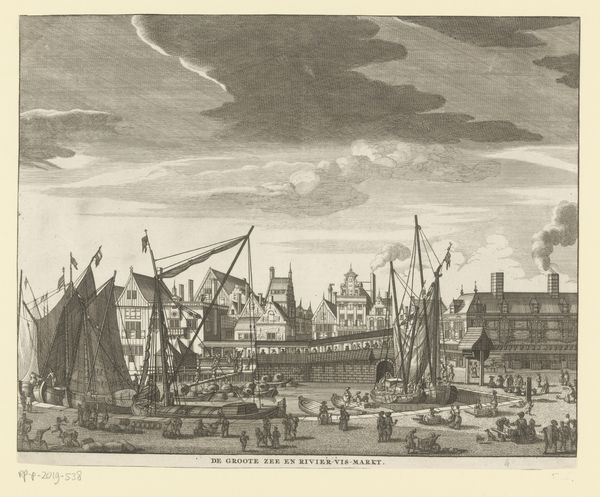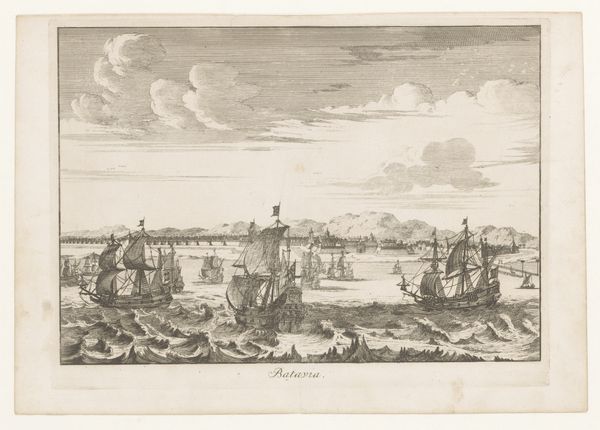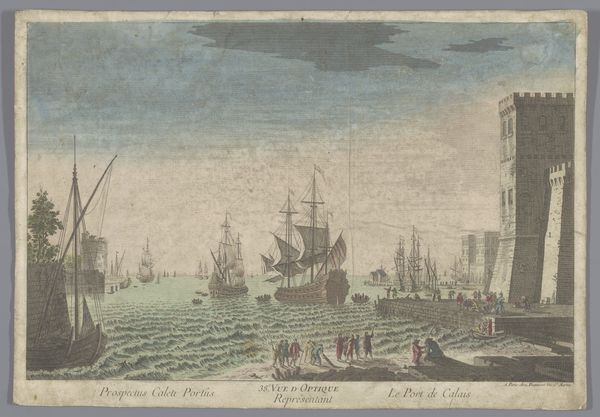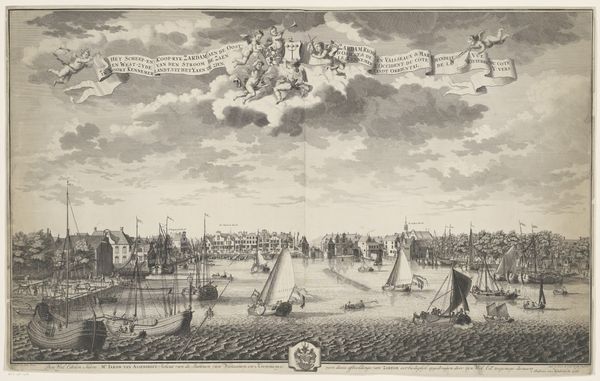
print, engraving
#
baroque
# print
#
old engraving style
#
landscape
#
cityscape
#
engraving
Dimensions: height 550 mm, width 914 mm
Copyright: Rijks Museum: Open Domain
Curator: Hendrick de Leth, sometime between 1721 and 1774, captured this scene, "Gezicht op Amsterdam, gezien vanaf het IJ" – or, View of Amsterdam, Seen from the IJ—using engraving techniques. It's quite a bustling seascape. Editor: My first thought? It’s a statement of power, isn’t it? A kind of controlled chaos reflecting Amsterdam’s mercantile might at that time. So many ships, each a vein pumping life into the city. Curator: Absolutely. Ships dominate—they symbolize not just trade, but Amsterdam’s connection to the world, right? Notice the allegorical figures floating on clouds at the top. They carry banners, scrolls, symbols of civic pride and prosperity. Editor: The text. How accessible was this visual language for the everyday person, then? Were these icons meant for everyone or a select elite? Curator: Well, while literacy varied, images spoke universally. Symbols like Neptune for maritime power, or Mercury for commerce—these were part of the shared cultural vocabulary. They legitimized Amsterdam's dominance, projecting a message of divine favor and enduring success. These icons echo centuries-old stories—an instantly recognizable vocabulary of wealth, influence and strength. Editor: And let’s not forget that what looks like benign trade in the picture also means colonization, enslavement and exploitation for the places beyond Amsterdam. The engraving aesthetic makes it feel a little distanced, reinforcing its elite perspective, doesn't it? Curator: That distance is interesting. There's certainly a romanticized quality—the neat ships, the orderly skyline, the clean, precise engraving. It emphasizes mastery. This control is a symbolic assertion of power. But the human cost is invisible within this frame. The cultural narrative this engraving contributes is incomplete, lacking the full history of trade and prosperity in the Netherlands at that time. Editor: Exactly. These idyllic cityscapes served very specific agendas, normalizing power imbalances that continue to echo today. Curator: Still, it remains a valuable artifact. It’s like a frozen moment. A lens through which we examine their self-perception and enduring ambitions. It continues to evoke. Editor: Absolutely. It reminds us that even the most beautiful images must be approached with a critical awareness of the stories they obscure and those they perpetuate.
Comments
No comments
Be the first to comment and join the conversation on the ultimate creative platform.
